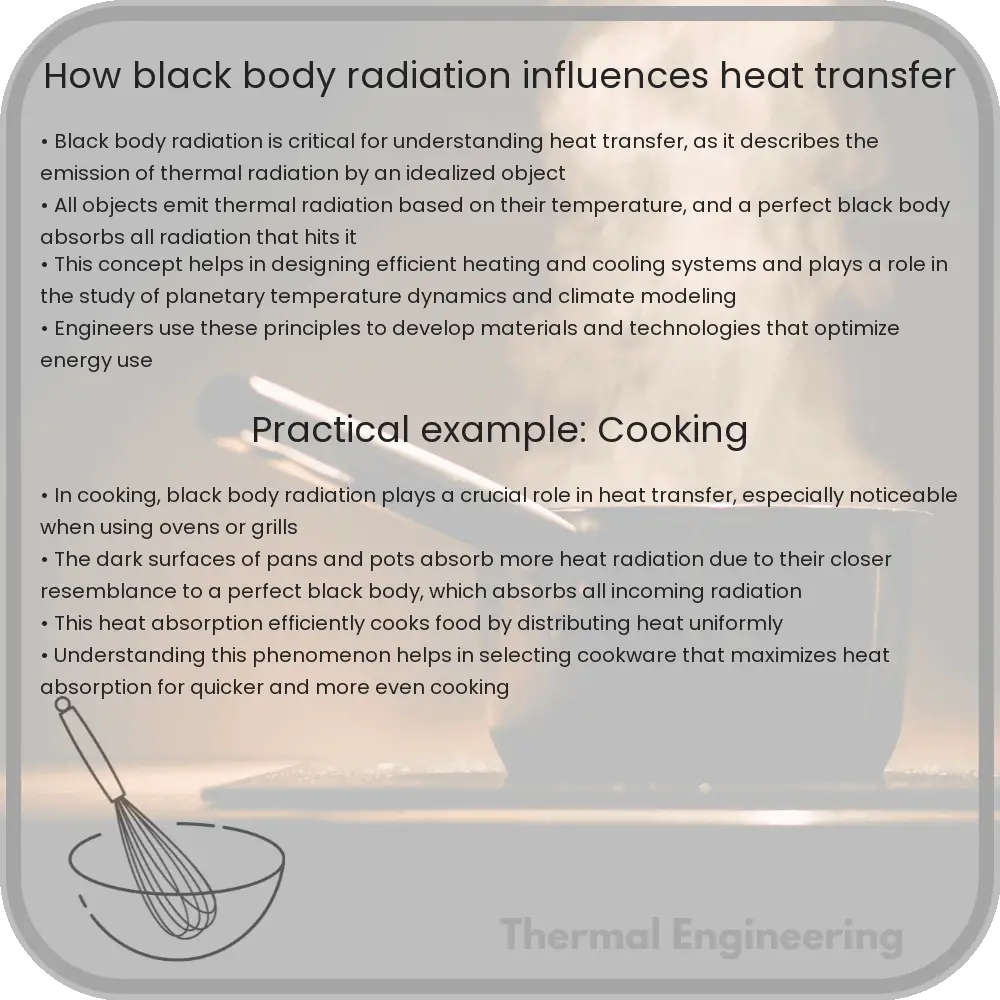Learn about black body radiation, a key concept in thermal physics that impacts heat transfer, understands how it influences radiative heat transfer mechanisms, and explores its applications in engineering.

Understanding Black Body Radiation and Its Role in Heat Transfer
Black body radiation is a fundamental concept in the field of thermal physics and plays a critical role in heat transfer processes. A black body in physics refers to an idealized object that absorbs all radiation that strikes it. It does not reflect or transmit any radiation. Despite its name, a black body does not necessarily appear black. It emits radiation with a characteristic spectrum that depends only on its temperature. This emitted radiation is key to understanding various heat transfer mechanisms.
What is Black Body Radiation?
A black body is a theoretical or model body which absorbs all electromagnetic radiation, regardless of frequency or angle of incidence. That is, a black body is a perfect absorber—and similarly a perfect emitter—of electromagnetic radiation. The radiation emitted by a black body is called black body radiation. The spectrum of black body radiation (i.e., the amount of energy emitted at different wavelengths) is solely determined by the temperature of the body, described by Planck’s Law.
The Planck’s Law of black body radiation is mathematically represented as:
I(λ) = (2hc2λ-5) / (e(hc/λkT) – 1)
Where:
- I(λ) is the spectral radiance.
- h is Planck’s constant.
- c is the speed of light in a vacuum.
- λ is the wavelength of the emitted radiation.
- k is the Boltzmann constant.
- T is the absolute temperature of the body in Kelvin.
Impact of Black Body Radiation on Heat Transfer
Understanding black body radiation is essential for analyzing heat transfer, which occurs in three fundamental ways: conduction, convection, and radiation. Of these, black body radiation influences the radiative component of heat transfer.
Heat transfer by radiation occurs when thermal energy is emitted by a body, travels through a medium or vacuum, and is absorbed by another body. The efficiency of this process depends on the emissivity of the objects involved, which measures how well an object emits infrared energy compared to a perfect black body. In practical applications, no real object behaves as a perfect black body; they all have emissivities less than 1. However, by understanding black body radiation, engineers can better predict how much energy a real object will emit or absorb.
Applications of Black Body Radiation in Engineering
- Thermal Imaging: Used in various engineering fields, thermal imaging cameras operate based on the concept of black body radiation. They detect the radiation emitted by objects to analyze their temperature.
- Solar Power: Solar panels can be designed with materials that have higher emissivities to absorb more radiant heat effectively, which is directly related to the concepts of black body radiation.
- Building Materials: The efficiency of building insulation and window glasses in controlling heat transfer is significantly improved by understanding and applying concepts of radiation emissivity derived from black body radiation studies.
In conclusion, black body radiation is a cornerstone phenomenon in the science of heat transfer. By understanding the emission and absorption characteristics of materials as approximations to black bodies, engineers can design more effective cooling and heating systems, enhance energy efficiency, and innovate new technologies in thermal management.